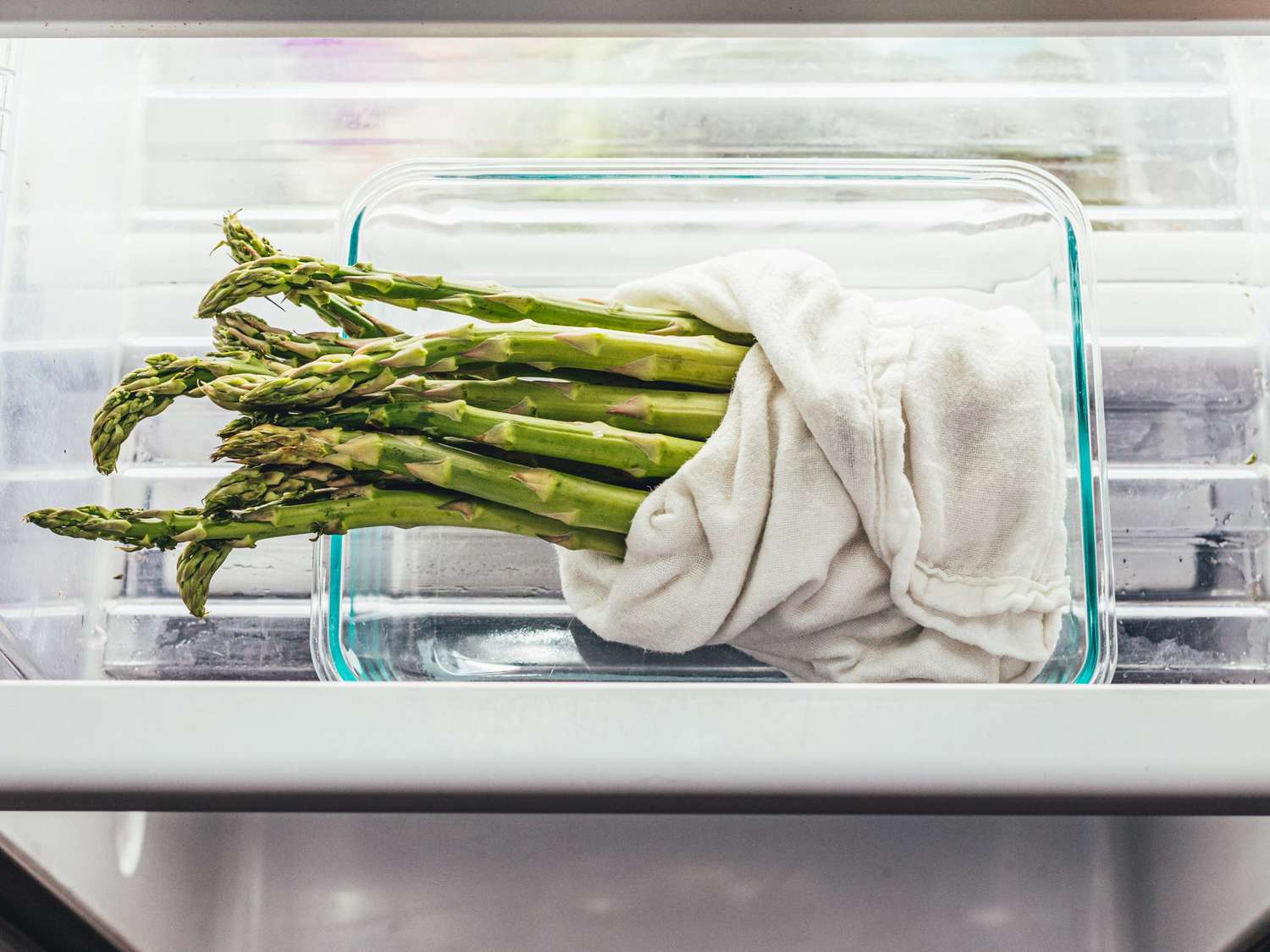

Articles
How To Store Asparagus In Your Fridge
Modified: January 6, 2024
Learn how to store asparagus in your fridge and keep it fresh for longer with these helpful articles.
(Many of the links in this article redirect to a specific reviewed product. Your purchase of these products through affiliate links helps to generate commission for Storables.com, at no extra cost. Learn more)
Introduction
Asparagus is a delicious and nutritious vegetable that is enjoyed by many. Whether you grow your own asparagus or buy it from the store, proper storage is crucial to maintain its freshness and flavor. By following the correct storage methods, you can extend the shelf life of asparagus and ensure that it stays crisp and flavorful until you’re ready to use it.
In this article, we will guide you through the step-by-step process of storing asparagus in your fridge. From choosing fresh asparagus to properly preparing and storing it, we’ll cover all the tips and tricks to help you keep your asparagus fresh for as long as possible.
So, if you’re tired of your asparagus wilting and losing its flavor before you get a chance to enjoy it, read on to discover the secrets of proper asparagus storage!
Key Takeaways:
- Keep asparagus fresh by choosing vibrant, firm spears and storing them in the fridge with trimmed ends in water or wrapped in a damp towel. Extend shelf life by freezing and get creative with reheating for delicious meals.
- Properly stored asparagus maintains its freshness, flavor, and nutrients. Choose, prepare, and store it correctly to enjoy crisp, delicious spears in various dishes. Don’t forget to check the quality before use!
Read more: How To Store Fresh Asparagus In Fridge
Why Proper Storage of Asparagus is Important
Proper storage of asparagus is essential to preserve its taste, texture, and nutritional value. Asparagus is a delicate vegetable that begins to deteriorate as soon as it is harvested. Without proper storage, you may find yourself with wilted, limp, and less flavorful asparagus.
One of the key reasons why proper storage is important is to maintain the crispness and freshness of asparagus. Asparagus contains a significant amount of water, and if not stored correctly, it can quickly lose moisture, leading to a limp and rubbery texture. Nobody wants to bite into a piece of asparagus that lacks its signature snap!
In addition to its texture, proper storage also helps retain the vibrant green color of asparagus. Exposure to light and air can cause asparagus spears to turn yellowish and lose their visual appeal. By storing asparagus correctly, you can ensure that it remains visually appealing, making it a more appetizing addition to your meals.
Moreover, proper storage helps to preserve the nutritional value of asparagus. Asparagus is rich in vitamins, minerals, and antioxidants, which can be diminished if it is not stored properly. By maintaining its freshness, you can reap the maximum health benefits from this nutritious vegetable.
Lastly, proper storage can ultimately save you money. Have you ever bought a bunch of asparagus, only to find that it goes bad before you have a chance to use it? By knowing how to store asparagus properly, you can extend its shelf life and reduce waste, ensuring that you get your money’s worth.
Now that you understand the importance of proper asparagus storage, let’s dive into the step-by-step process of storing asparagus in your fridge.
Step 1: Choosing Fresh Asparagus
The first step in storing asparagus is selecting fresh, high-quality spears. When buying asparagus, there are a few key indicators to look for to ensure that you’re choosing the best possible option:
- Appearance: Look for bright green asparagus spears with tightly closed, compact tips. Avoid any spears that are mushy, slimy, or have brown spots.
- Texture: Gently squeeze the spears. They should feel firm and have a slight resistance. Avoid asparagus that feels soft or limp.
- Thickness: Choose asparagus spears that have a uniform thickness. Thicker spears tend to be more flavorful and have a more satisfying texture.
It’s also worth noting that the size of the asparagus does not necessarily indicate quality. Thick or thin spears can both be delicious, so choose based on personal preference. Just make sure that the spears you select meet the other criteria mentioned above.
If you have the opportunity, consider purchasing locally grown asparagus. Locally sourced asparagus is often fresher since it hasn’t undergone long-distance transportation. Additionally, supporting local farmers helps to stimulate the local economy and reduce the carbon footprint associated with transporting produce across long distances.
Once you’ve chosen your fresh asparagus, it’s time to move on to the next step: preparing it for storage.
Step 2: Preparing Asparagus for Storage
Before storing asparagus, it’s crucial to properly prepare it to maximize its shelf life and maintain its freshness. Here are the steps to prepare asparagus for storage:
- Trim the ends: Asparagus spears have woody ends that are tough and not ideal for eating. Using a sharp knife or snapping the ends off, remove about 1-2 inches from the bottom of each spear. This will ensure that you’re left with the most tender and edible part of the asparagus.
- Rinse and dry: Give the asparagus spears a gentle rinse under cold water to remove any dirt or debris. Pat them dry with a clean kitchen towel or paper towels to remove excess moisture.
- Optional: Bundle the spears: If you prefer, you can bundle the asparagus spears together using a rubber band or kitchen twine. This helps to keep the spears organized and prevents them from rolling around in the fridge. However, it’s not necessary and can be skipped if you prefer to store the asparagus loose.
Now that your asparagus is properly prepared, you’re ready to move on to the next step: storing it in the fridge.
Step 3: Storing Asparagus in the Fridge
Storing asparagus correctly in the refrigerator is essential to keep it fresh and crisp. Follow these steps to ensure that your asparagus stays in optimal condition:
- Moisture: Asparagus loves moisture, so it’s important to keep it hydrated. Fill a glass or container with about an inch of water, then place the trimmed ends of the asparagus in the water. Alternatively, you can wrap the ends of the asparagus with a damp paper towel. This will help the spears retain moisture and stay crisp.
- Storage container: Place the asparagus in a storage container or a resealable plastic bag. Make sure to leave the tips of the asparagus slightly exposed to allow for airflow. If using a bag, close it loosely to prevent condensation from building up.
- Location: Store the asparagus in the refrigerator’s vegetable crisper drawer, which is designed to maintain optimal humidity levels. If you don’t have a crisper drawer, any part of the fridge with a consistent temperature will suffice.
It’s worth noting that asparagus is best enjoyed as fresh as possible, so try to use it within a few days of purchase for the best flavor and quality. However, when stored properly, asparagus can last up to a week in the refrigerator.
Now that you know how to store asparagus in the fridge, let’s move on to the next step: extending the shelf life of asparagus.
To store asparagus in your fridge, trim the ends and place the spears upright in a glass of water, then cover the tops with a plastic bag and refrigerate. This will keep them fresh for up to a week.
Read more: How To Store Cooked Asparagus
Step 4: Extending the Shelf Life of Asparagus
If you want to extend the shelf life of your asparagus even further, there are a few additional techniques you can try:
- Trim the ends again: After a few days in the fridge, the asparagus ends might become dried out. Before using the asparagus, consider trimming the ends again to ensure freshness.
- Change the water: If you stored your asparagus in water, make sure to change the water every couple of days. This helps to keep the asparagus hydrated and fresh.
- Wrap in a damp paper towel: If the asparagus starts to dry out, you can revive it by wrapping the spears in a damp paper towel. This adds moisture back to the asparagus and helps to preserve its crispness.
- Use a vegetable storage bag: Investing in a vegetable storage bag can help prolong the shelf life of asparagus. These bags are designed to regulate humidity and airflow, providing an optimal environment for storing vegetables.
By following these tips, you can extend the shelf life of your asparagus and enjoy its freshness for a longer period of time.
Next up, let’s explore how to freeze asparagus properly for long-term storage.
Step 5: Properly Freezing Asparagus
If you have an abundance of asparagus and want to preserve it for future use, freezing is a great option. Freezing asparagus allows you to enjoy its flavors and nutrients even when it’s out of season. Follow these steps to properly freeze asparagus:
- Blanching: Start by blanching the asparagus. Blanching involves briefly boiling the asparagus to halt enzyme activity and preserve its color, texture, and nutrients. To blanch, bring a pot of water to a boil and add the asparagus spears. Cook for 2-3 minutes, then immediately transfer them to an ice bath to cool and stop the cooking process.
- Drain and dry: Once cooled, remove the asparagus from the ice bath and drain them on a clean kitchen towel or paper towels. Gently pat them dry to remove any excess moisture.
- Portion and package: Divide the asparagus into portion sizes that you usually use in your recipes. Place the portions in airtight freezer bags or containers. Squeeze out any excess air before sealing to prevent freezer burn.
- Label and date: Don’t forget to label the bags or containers with the contents and the date of freezing. This will help you keep track of how long the asparagus has been stored.
When properly frozen, asparagus can maintain its quality for up to 8-12 months. To thaw, simply transfer the frozen asparagus to the refrigerator overnight or directly add it to your recipes without thawing for soups, stews, and stir-fries.
Now that you know how to freeze asparagus, you can make the most of your harvest or take advantage of special deals on asparagus at the grocery store.
Next, let’s move on to the final step: reheating and using stored asparagus.
Step 6: Reheating and Using Stored Asparagus
When it comes to reheating and using stored asparagus, there are several delicious options to consider. Here are a few ideas:
- Reheating: To reheat stored asparagus, you have a couple of options. One method is to gently steam the spears for a few minutes until they are heated through. Another option is to place the asparagus on a baking sheet and roast them in the oven at 350°F (175°C) for 5-10 minutes. Be careful not to overcook, as you want to retain their crispness.
- Salads and grain bowls: Use the reheated asparagus as a topping for salads or grain bowls. Its tender texture and rich flavor complement a variety of fresh vegetables and grains.
- Pasta and risottos: Chop the reheated asparagus into bite-sized pieces and incorporate them into pasta dishes or risottos. They add a pop of color and a subtle earthy flavor to these comforting dishes.
- Frittatas and quiches: Mix the reheated asparagus with eggs, cheese, and other ingredients to create flavorful frittatas or quiches. It’s a fantastic way to use up leftover asparagus and create a satisfying meal.
- Stir-fries: Add the reheated asparagus towards the end of a stir-fry to retain its crispness. Pair it with other vegetables, protein, and your favorite sauce for a quick and healthy meal.
These are just a few ways to incorporate stored asparagus into your meals. Don’t be afraid to get creative and experiment with different recipes and flavor combinations.
Remember, always taste the stored asparagus before using it to ensure its quality. If it tastes off or has an unpleasant texture, it’s best to discard it and opt for fresh asparagus instead.
Now that you know how to reheat and use stored asparagus, you can enjoy its flavors and nutrients even when it’s not in season or readily available.
To wrap up, let’s summarize what we’ve covered in this article.
Conclusion
Proper storage of asparagus is vital to maintain its freshness, flavor, and nutritional value. By following the steps outlined in this article, you can ensure that your asparagus stays crisp and delicious for as long as possible.
Start by choosing fresh asparagus with vibrant green color, firm texture, and tightly closed tips. Properly prepare the asparagus by trimming the ends and rinsing it under cold water. Storing asparagus in the fridge requires keeping it hydrated by placing the trimmed ends in water or wrapping them with a damp paper towel. Store the asparagus in a storage container or a resealable bag, leaving the tips slightly exposed for airflow. Keep it in the vegetable crisper drawer or any part of the fridge with a consistent temperature.
If you want to extend the shelf life of your asparagus, consider trimming the ends again, changing the water every few days, or wrapping it in a damp paper towel if it starts to dry out. Investing in a vegetable storage bag can also help prolong its freshness.
If you have an abundance of asparagus, freezing is a great option for long-term storage. Blanch the asparagus, drain and dry it, portion it out, and store it in airtight containers or bags. Properly labeled, frozen asparagus can last up to 8-12 months.
When reheating stored asparagus, consider options like steaming or roasting. Use it as a topping for salads, incorporate it into pasta dishes, frittatas, or stir-fries. Get creative and experiment with different recipes to make the most of your stored asparagus.
By following these steps, you can enjoy the taste and nutritional benefits of asparagus throughout the year. Remember to always check the quality of stored asparagus before using it in your dishes.
So the next time you bring home a fresh bunch of asparagus, handle it with care and give it the proper storage it deserves. Your taste buds will thank you!
Frequently Asked Questions about How To Store Asparagus In Your Fridge
Was this page helpful?
At Storables.com, we guarantee accurate and reliable information. Our content, validated by Expert Board Contributors, is crafted following stringent Editorial Policies. We're committed to providing you with well-researched, expert-backed insights for all your informational needs.


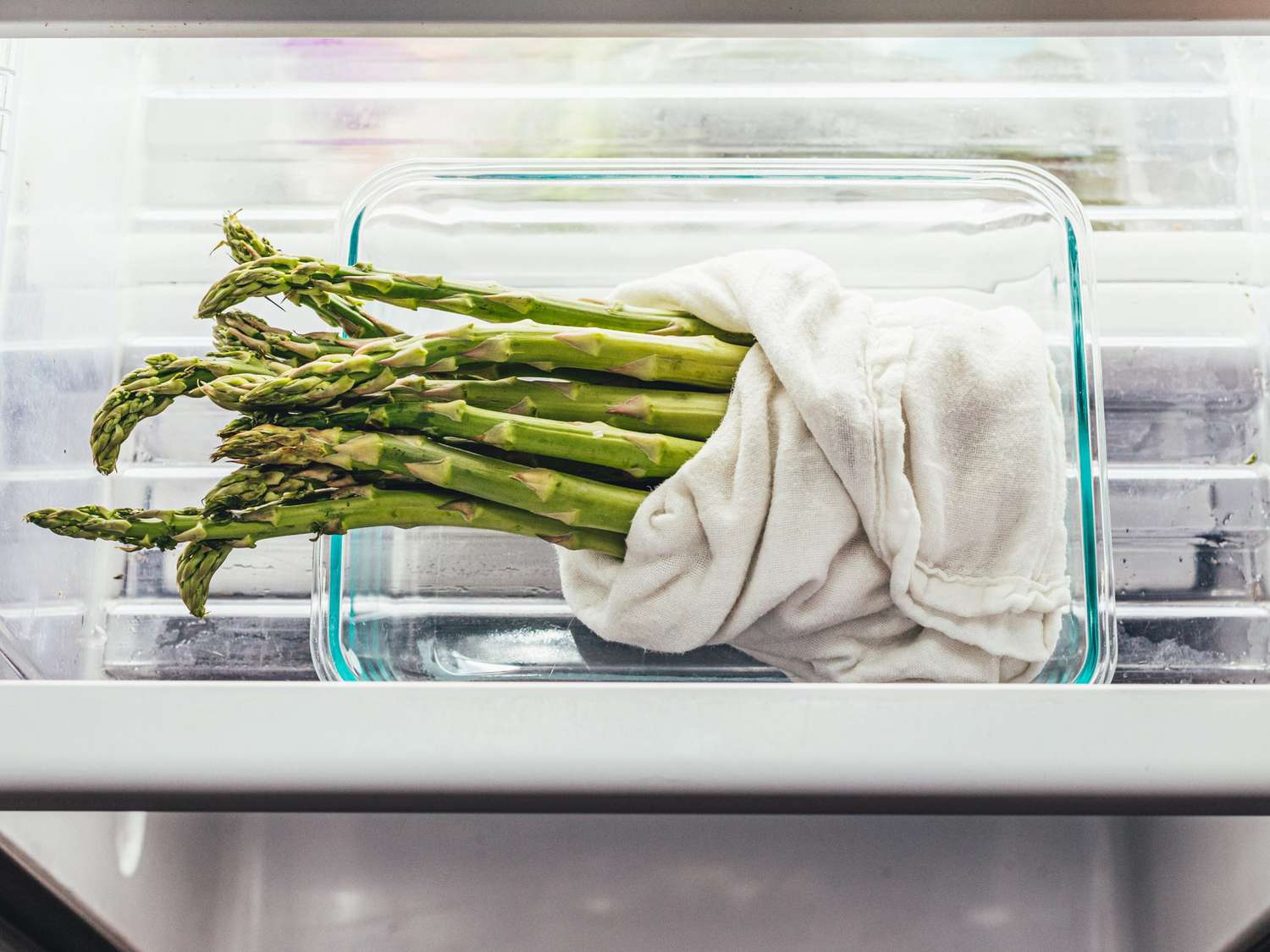
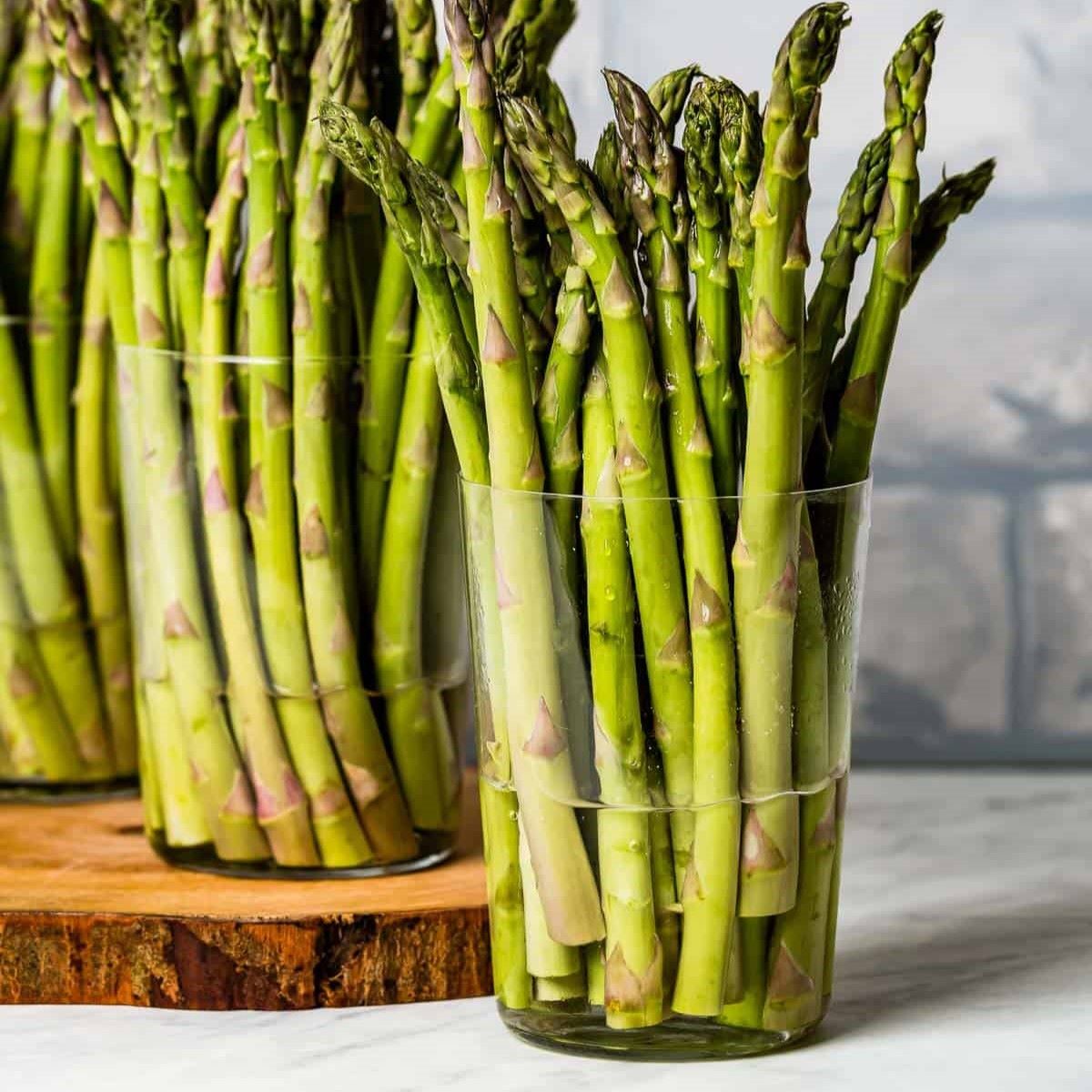
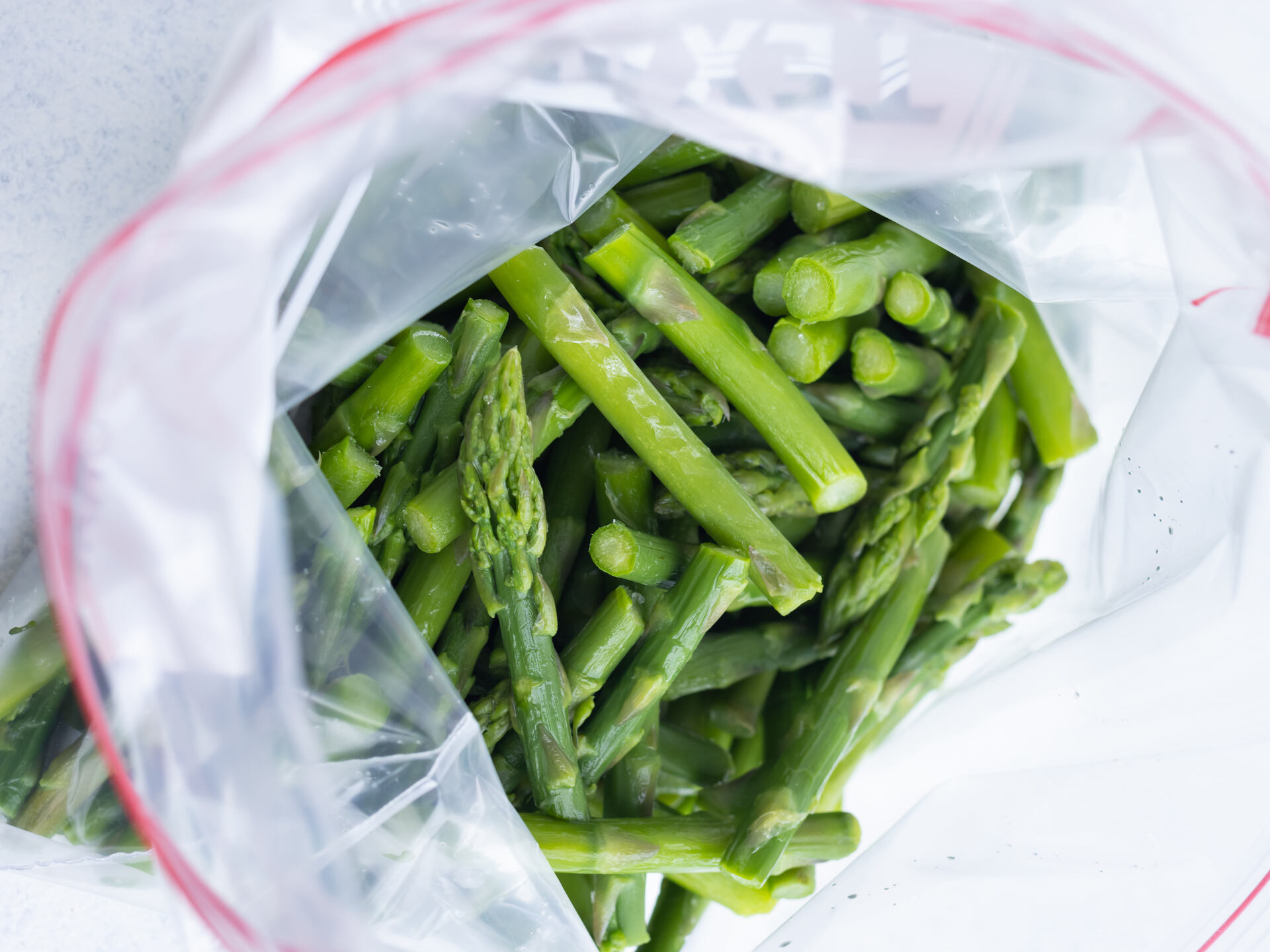


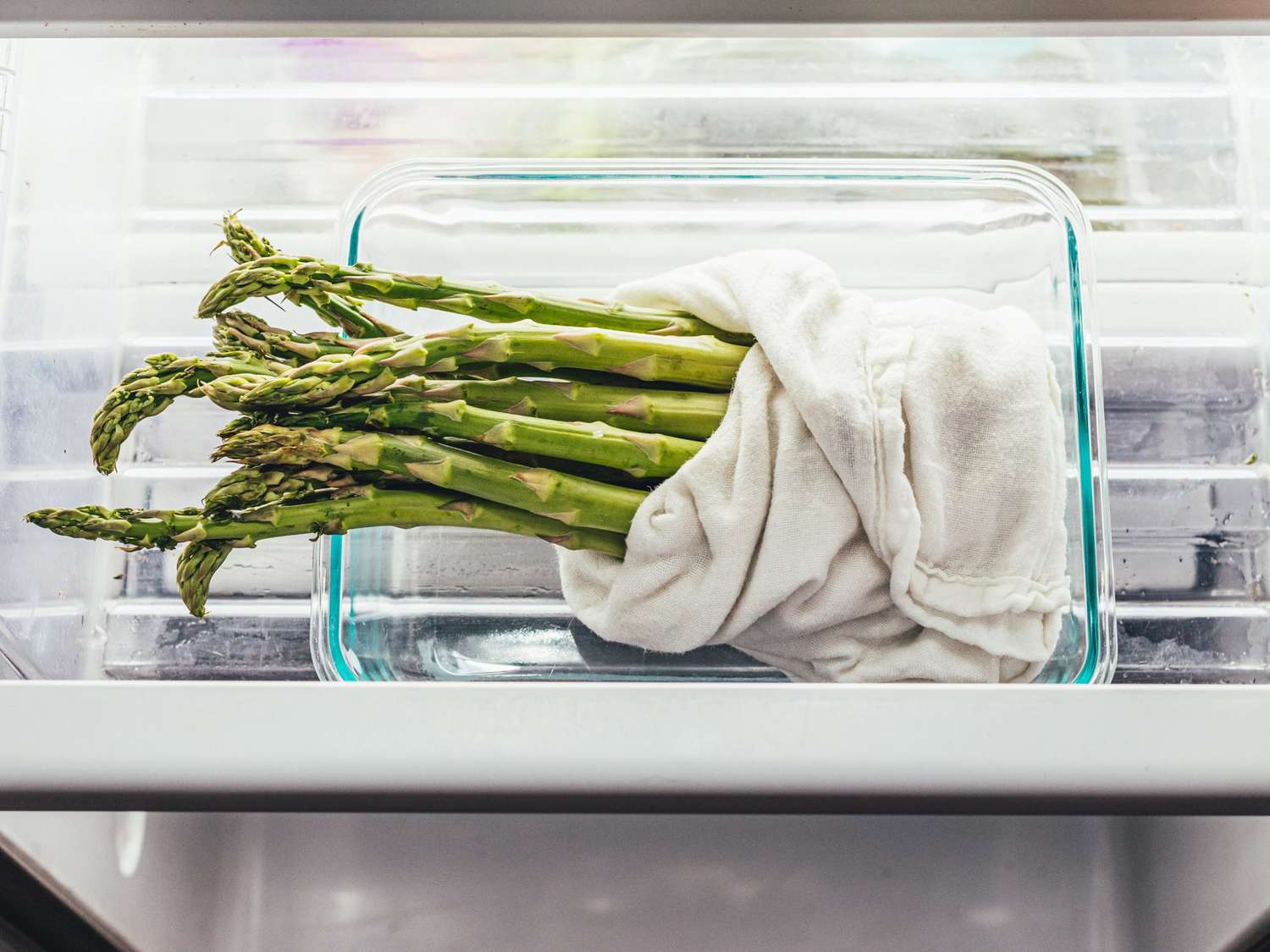
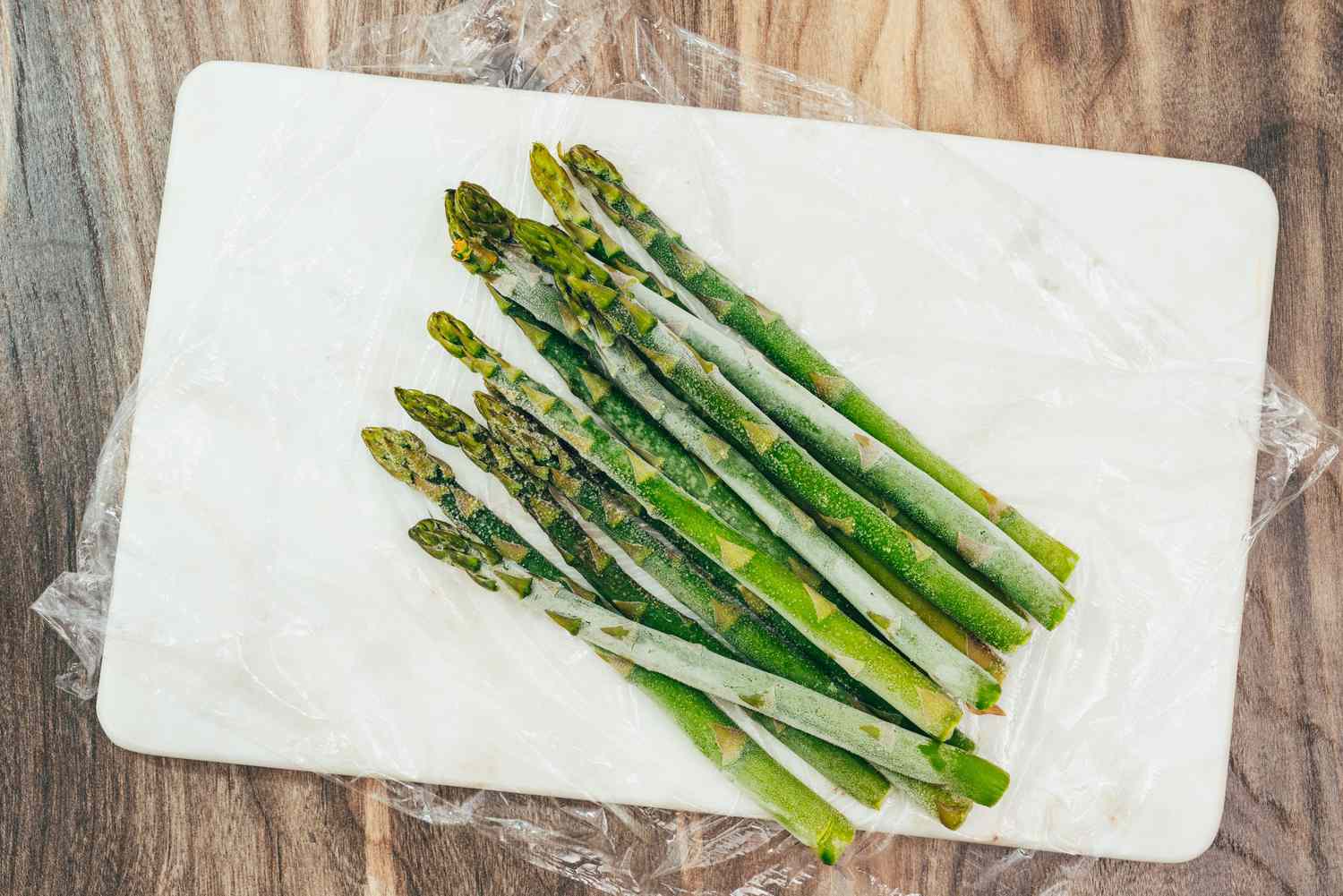


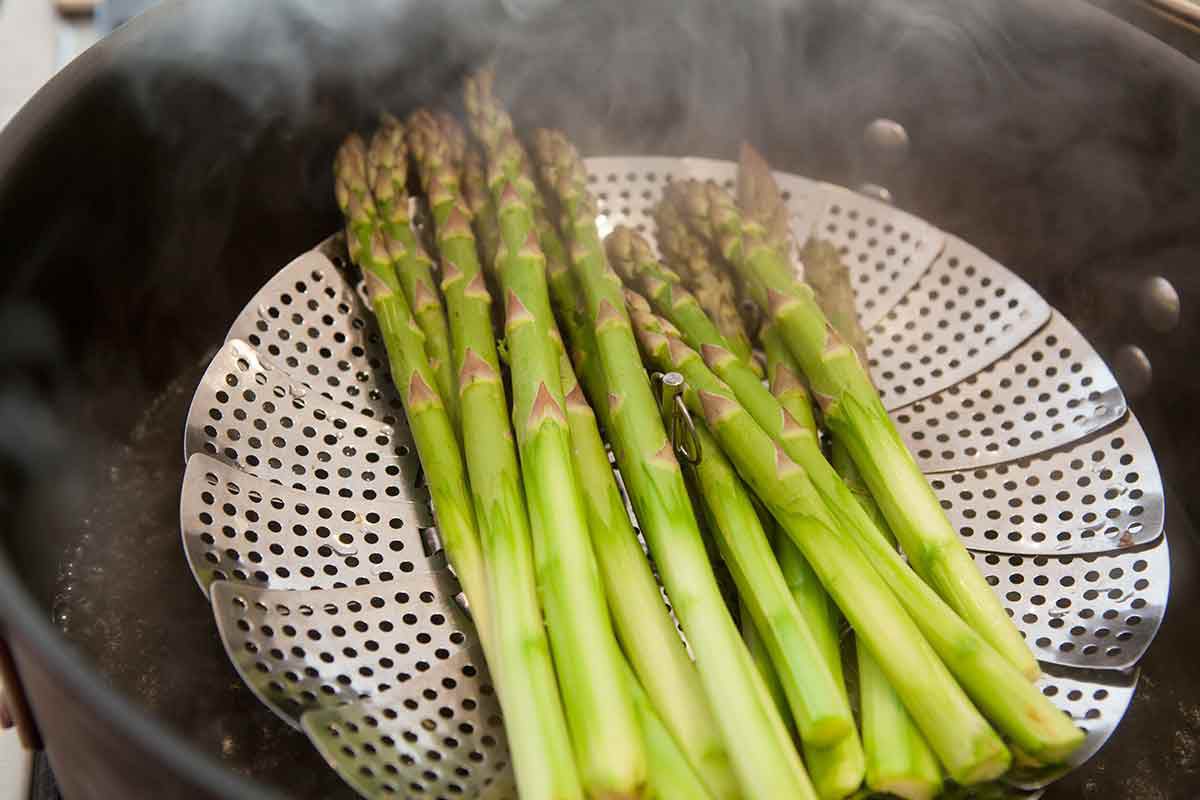

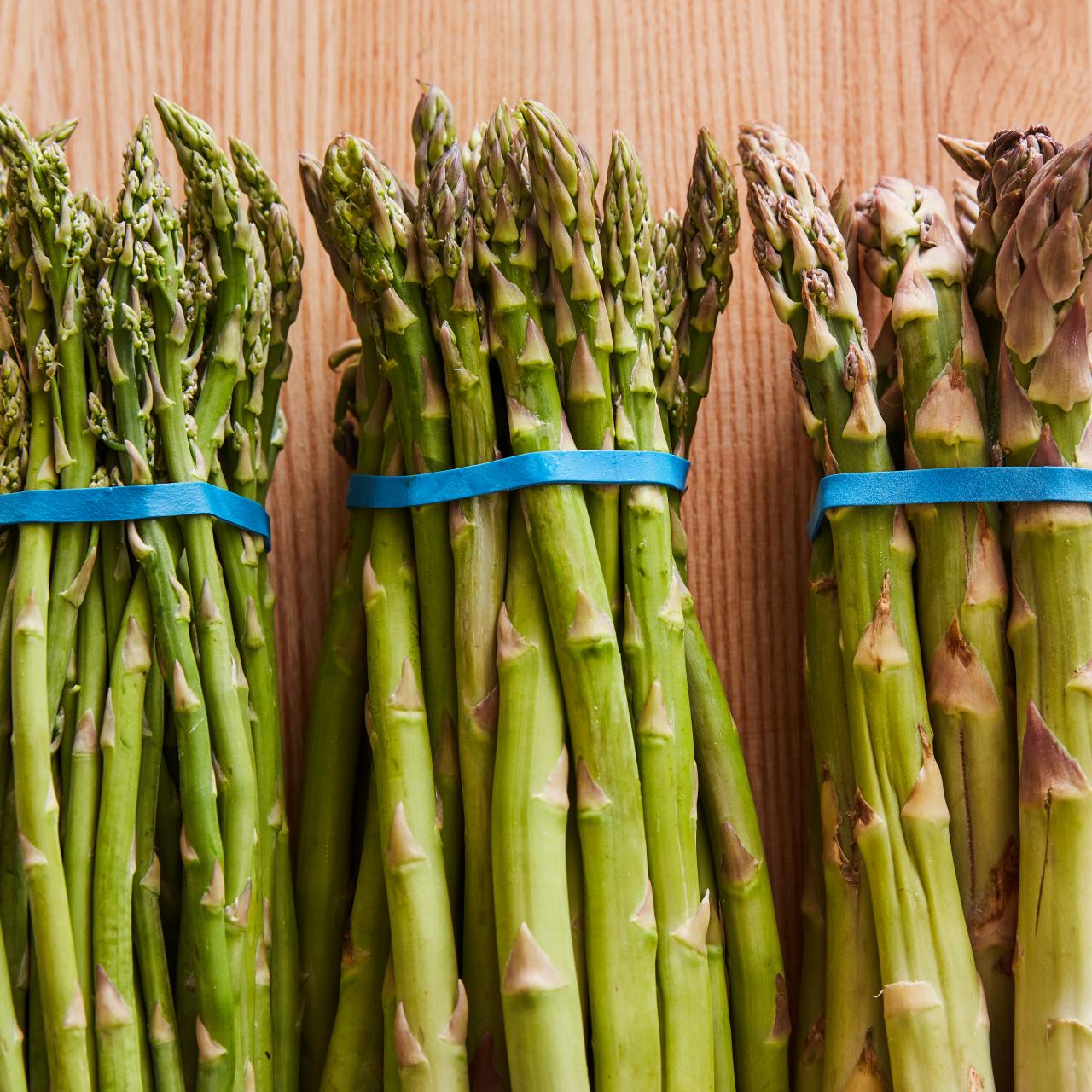

0 thoughts on “How To Store Asparagus In Your Fridge”